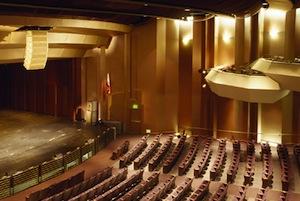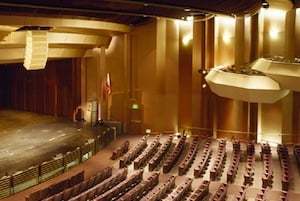
The Napa Valley Symphony’s website says, “down for maintenance. Check back soon.” But there’s no need. The symphony is not coming back, at least as it was. The last performance was in December. The organization officially shut down in February. Musicians received final payments in March. The office in North Napa closed in April. Stands, chairs, the music library, office equipment; it’s all stored in Donald Carr’s garage, which is otherwise filled with two dozen vintage cars, including a 1910 Pierce Arrow.
If you were to reduce all the reasons for the collapse of the Napa Symphony to just one factor, or really, one person, it would be the symphony’s patron-in-chief, Donald Carr, the man who in recent years, along with his wife, Lonnie, kept the symphony going, as well as the Lincoln Theater. He died in a car accident last August, while driving with his wife to a summer home in Chester, California. Carr was 80.
Now all that’s left of the orchestra is a $300,000 deficit and the interment process itself: either Chapter 7 or 11. The musicians’ union, local 292, would prefer 11, although that’s the more expensive option. In a straw poll, the symphony board voted for chapter 7, with one dissension, from Eldon Sellers. Sellers has proposed a third way, which would involve securing an agreement from creditors that might allow the symphony to go on as it is. The symphony expects to file a reorganization plan in a few weeks.
The Lincoln Theater has also closed, at least temporarily. That was the symphony’s home base, on the grounds of a veteran’s home in Yountville. The Friends of the Lincoln Theater are in dissolution. Creditors darken that doorway as well, including among others, the IRS, the California Franchise Tax Board, and the symphony, to the tune of about $15,000. The theater’s total liability is between $600,000 and $800,000. The prospect for creditors is “pennies on the dollar.”
“You must realize the importance of concerts in bringing people together, and bringing them together with music and joy. People forget the community function of a symphony.” — Margrit Mondavi, Symphony donor
“It’s a tragic loss,” Margrit Mondavi told me. For nearly 40 years, until 2010, she was one of the great patrons of the Napa Valley Symphony. Her largesse, which went to about $110,000 a year, was gradually cut short after the Mondavi winery was sold, in 2004.
“It’s not only the loss of the music,” she said, “but the symphony is a key component in the community infrastructure, like a museum or a school, and now we don’t have it. The educational aspects alone are significant. But, above all, you must realize the importance of concerts in bringing people together, and bringing them together with music and joy. People forget the community function of a symphony.”
Sounds of Silence
There's no hero in this story. Protagonists galore, but no one you can hang on to for sympathy and direction. Well, what about the community? you might ask. But that’s the strange part of the story and the part that resonates with similar situations around the country: The community is the victim in the drama, but not the hero. Because the truth is that there are just not enough people who want a symphony in Napa these days. They may appreciate its real and symbolic value as an institution, they may buy tickets if it’s there, but they don’t demand it, and it may be fair to say they no longer expect it.
Despite the symphony’s demise, hope springs eternal. The musicians union would like to push restart, and are talking about staging a concert this summer. Ming Luke, a former assistant conductor with the Napa Valley Symphony, claims he has money for two concerts in 2013. Gabriel Sakakeeny, who started the American Philharmonic in Sonoma, an all-volunteer orchestra, says an earned-income business model could work in Napa.
And then there is Richard Aldag, former Artistic Director of the Napa Valley Symphony — a “temporarily retired administrator” as he describes himself. He’s fashioning a near life-sized replica of the NVS, a 40 to 45-member orchestra, at least half of whose members would be drawn from the old crew. He says they will break silence in the winter of 2013. This new incarnation, to be called The Napa Valley Orchestra, will play at the Napa Valley Opera House and be led by Dimitri Sitkovetsky, now music director of the Greensboro Symphony, who has also conducted the NVS and performed at Napa’s Festival del Sole.
In sum, all is in place for the music to continue, insists Aldag, including the money, although there is a question of whether the endowment fund board will finally support the project, and how that could happen under the corporation’s bylaws, which preclude support for any new project for five years. Possibly, that rule could be changed by a unanimous vote.
“The endowment fund felt that they did their part. They just felt that the [symphony] board was not living up to its role as fundraising body.” — Richard Aldag, executive director
Nevertheless, people who have been involved with the symphony have a jaundiced view of the future. “I think we’d all like to see something like this happen,” said Cookie Deckter, a symphony board member in charge of marketing and development. “But at this point, frankly, I’ll believe it when I see it. I’m not sure if there is really the support for this in the community.”
How Was It Possible?
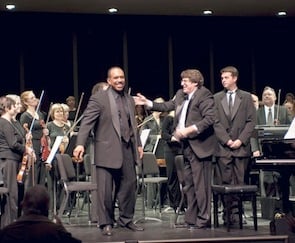
The Napa Symphony began in 1933, in the third year of the Great Depression. And you wonder how it is that an orchestra born at poverty’s pinnacle, and which survived however many recessions, finally has to be put down in 2012, just when the economy is, perhaps, on the mend and in a place often regarded, incorrectly, as recession-proof and perhaps wealthier than it really is.
Still, how could this have been? Look around and others are managing. Santa Rosa, Marin, Berkeley; they’re all in the game. Vallejo, with its nonunion players, is surviving. In Sacramento, the orchestra has been hanging on by a bow hair but just recently raised the $150,000 needed as a down payment for another season. The board vote for keeping it going was not unanimous, but they are moving forward.
In youth crime-ridden Stockton, the Stockton Symphony is flourishing. And the Modesto Symphony is making it. Modesto: That would be the town along meth-route 99 in the news for the Northern California youth soccer cup, the McHenry Mansion and the murder of Laci Peterson. Say what you will, the town has a well-managed symphony, and its discipline, and sense of proportion, has paid off.
Unlike in Napa.
“It was no surprise,” Ming Luke told me. “A lot of the musicians had been waiting for this to happen for years.” Luke is now the associate conductor for both the Berkeley and Modesto Symphonies.
The Bigger the Better
The Napa Symphony floundered over a decade or more after its transition to fully professional orchestra, but particularly after 2007. “Poor governance” is a summation you often hear. Others say, “a perfect storm.” The specific reasons are generally agreed upon: Equity damage from the 2008 Great Recession; a decline in the quality of performances; poor marketing; bad programming; the lack of a development director and sometimes a music director; an exhausted donor base and a lack of smaller donors; the splitting off of the youth orchestra — which alienated donors interested in the educational function of the symphony; and an inability to monetize tourism, particularly weekend tourists from San Francisco.
“The desire is always to be bigger and better,” says Asher Raboy, the symphony’s music director from 1990-2010, and the man who led the transformation from community orchestra to large, professional organization. “The mantra is, if you don’t grow, you die. But you also have to have a good business plan and even if you think you can expand by 20 percent, you only expand by five percent instead.”
“I didn’t realize it was all on a single donor. But finally it became clear they didn’t have the money and that’s when we started yelling and screaming.” — Bob Williams, Local 292
As that diagnosis suggests, basic economic principles were ignored — most prominently, a generally accepted notion for small performing arts nonprofits that about 40 percent of your budget should come from earned income. It was around 30 at the symphony. And one donor supplied 25 percent of budgeted expenses in most years and 24 percent of the earned income.
Mike Enfield, who became the head of the symphony’s board of directors in July 2011, summed up the problem this way: “There was no real contingency plan. A proper plan would have been to restructure the symphony by decreasing the number of concerts and including two festivals in order to get earned income up to a level that would enable development of a new funding base. But it never happened.”
The Rescue Party That Never Arrived
The Symphony’s endowment fund might have come to the rescue at the 11th hour but didn’t. Some say that’s the real story. And why didn’t it come to the rescue? Because the endowment corporation has its own mysterious agenda, according to its critics. In defense of the endowment board, there was an incident in 2005 when symphony executives used the endowment — before it became a corporation — as collateral to draw down $300,000 out of what was then a $450,000 endowment. The legacy of that decision is a prickly mistrust between the two boards.
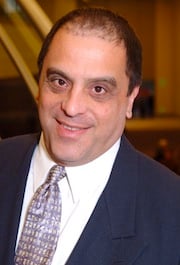
Richard Aldag for one would use another word. “It was not a lack of trust,” he told me. Not in the broad sense. “It was lack of trust in the ability of the board of directors to raise money. The endowment fund felt that they did their part, they were managing the funds that they were there to protect. They just felt that the [symphony] board was not living up to its role as fundraising body.”
I tried to reach the head of the endowment board, Susan Hafleigh, for a response to criticisms. “Well, now I'm in the middle of the Atlantic on a ship,” she emailed back, “and my cell phone is no longer working.” She suggested I talk to Howard Walker. I sent a list of questions and he responded in part only, but made the point that “the purpose of the Endowment Fund is to provide supplemental income to the principal funds of the Association which derived from ticket sales, grants, and fundraising. Only Endowment Fund income from investment earnings (i.e. dividends and interest) is to be distributed to the Association.”
But that doesn’t answer the criticism that, in fact, the fund board can take money out of the “corpus” if it votes for it.
One of the more unsightly moments in the battle between the two boards happened not long ago at the Napa Yacht Club. One of the founding directors of the endowment, and now a symphony board member was about to have dinner — this is someone who had once donated $100,000 to the endowment fund — when out of the blue, a board member from the endowment corporation came up to the bar and said, in an arrogant and rude way and in so many words, “We’re not going to give you any more money. You’re going to have to get the symphony board members to pony up the money to pay for your own bills.”
When Good Theaters Go Dark
Among the factors that undermined the symphony was the closing of the Lincoln Theater. It was built in 1957 as a state auditorium on the grounds of the state veteran’s home in Yountville. In the late 1990s, Donald Carr and some other donors decided that the theater would be a perfect home for the symphony, as well as an eclectic mix of other events. They negotiated a highly unusual joint venture agreement with the state. The agreement was that private money would be used to upgrade the theater and, in return, the symphony and other producers could keep any profits.
“When the symphony was playing at the Lincoln Theater what you saw was a real cross section. I see the faces of students, agricultural workers, vets, as well as professionals.” — Mike Enfield, head of the Symphony board
In 2006, the symphony board authorized what was originally supposed to be a “small-scale,” $2 million renovation; but the project overran that budget to a total of $22 million. Donald Carr paid between $9.5 million and $12 million of that, and bursts of cash in addition. So when he died last August, there was no money to keep the theater going, and with the symphony fed from the same stream and without a suitable alternative, the music died.
On paper, the Lincoln Theater was perfect for the symphony: Twelve hundred seats was the right number to make a profit, as opposed to the Napa Opera House with only 440 seats. Moreover, the Lincoln has great acoustics and, as someone put it, “once you get in and sit down you never want to leave.”
Yet it was never quite the success anticipated. Some say that’s because you couldn’t walk to it from downtown Yountville, which has some of the most famous restaurants in Northern California. Or else people didn’t want to leave the nightly charm of Napa, with its many wine bars and pastoral sophistication. In addition, there may have been a certain ambivalence toward a theater attached to the Veterans Home of California, the largest in the country by the way. It is a home of the brave, of course, but perhaps less a reminder of wars won than of war itself. It’s also possible that some people from out of the area may also have confused it with the state psychiatric hospital in Santa Rosa.
Ironically, the Lincoln Theater is being reopened for one week in July as one of the venues for the Festival del Sole. The deal has not quite finalized, but Stan Blyth, an attorney representing the Friends of the Theater told me he’s “very optimistic. We’re still negotiating but I’m confident."
“If the Lincoln Theater had not closed, and had we gone through with the Mozart festival in April, I believe the symphony could have survived,” notes Enfield.
Meanwhile, the legal process is focused on the dissolution of the Friends of the Lincoln Theater. Until that’s complete, interested parties cannot negotiate the theater’s use. The process is expected to be finished in September, and then the Dept. of Veterans’ Affairs has suggested that operation of the theater will be put out to bid. “The hope is that they don’t pick a successor solely based on a dollar analysis,” says Blyth. “The original notion was a collaboration between the state and local community groups. It was always meant to be a community asset.”
Money Really Does Grow On Trees
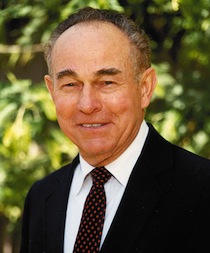
Donald and Lonnie Carr became interested in the Lincoln Theater during its reconstruction in 2000. As an observer put it, “For a lot of reasons Lonnie just said, ‘we’ll write checks. We don’t have children. We know it’s going to run a deficit, but we believe in this and we’ll support it.’”
The result was that, over time, the symphony board, perhaps in some cases against their better judgment, accepted the style to which they had became accustomed. The board became passive and sometimes intimidated. Critics say that Carr’s autocratic control of the board eventually pushed people away. One who was pushed away and who asked not to be identified tells this story: “He just alienated so many supporters, largely because he was rude. He would call people liars and never apologize. He was a self-made man who thought he could run a nonprofit with no regard for good will. But this is always the case: If you’re rude enough, donors will walk away. And they did, after one meeting or five meetings. Sooner or later everyone would leave.”
“I have to say I didn’t see him that way at all,” says Richard Aldag. “He was a tough businessman, extremely intelligent, and had a very comical nature. He always dealt with me on a level of affection I appreciated.”
I was told this “hypothetical” by someone who also asked not to be identified. “If, let’s say, someone like Francis Coppola came to the board and said, ‘I understand you’ve decided to reduce the number of concerts, I’m willing to write a check for $200,000 so that you can perform in the Opera House’ [not the Lincoln Theater], the Carrs would say to the board, ‘we’ll give you the $200,000; we don’t think the symphony should play in the Opera House.’ And that would be the end of it.”
Moreover, Donald Carr’s unique position enabled him to direct monies in ways that might not have been possible otherwise. For example, he once paid the salaries of the Lincoln Theater staff out of the Napa Valley Symphony accounts. This was one of several incidents that helped to create a “contentious situation”, which has yet to be entirely resolved.
“Don never seemed to be thinking much about the future,” noted one former board member. “Everything was on the spur of the moment. And if you came in with an idea to promote the symphony or to raise money, the reaction was invariably, ‘oh yes, we should do that.’ But then nothing happened.”
Carr paid expenses at the ‘back end’, so that the two concerts that followed his death, in September 2011, were not paid for. In fact, musicians were not paid until March 2012. “In retrospect,” says Bob Williams, head of local 292, “I didn’t realize it was all on a single donor. In fact, I didn’t realize that until October 7th, when the checks were supposed to be mailed. Usually, they were paid right after a concert and when they didn’t arrive I was told one reason or another: ‘We’re just waiting for Lonnie to write the checks.’ Or, ‘so and so didn’t come into the office.’ But finally it became clear they didn’t have the money and that’s when we started yelling and screaming.”
The amount owed to musicians was about $35,000, which was finally paid by the endowment corporation in March 2012.
“In a bad time, no matter what, you have to live in that bad time,” notes Richard Aldag, “even if you have a donor like that. We probably should have gone down to a chamber orchestra. As it was, we cut our budget and we altered repertoire but we could have gone even further. But having that one donor made it so that we didn’t have to make those cuts, and when that donor was no longer there, then it was such a big gap to overcome it was near to impossible.”
Another board member, who asked not to be identified, adds that the problem was not just reliance on one donor, but that the board itself did not do its work. “The truth is we had the wrong people on the board. Period. I don’t think they understood what was involved or how to approach the community. They clearly felt uncomfortable asking for money and you saw this over and over. Why? I don’t know. Maybe they didn’t believe in the product. At our last board retreat, which was in January, there was supposed to be a discussion about why people were on the board. And the so the question was raised but there was no discussion.”
A Question of Values
There’s no question that in this community of 136,800 people there is a dedicated group of enthusiasts intent upon having and keeping classical music in the valley. You think of John Kongsgaard, the winemaker and director of Chamber Music of the Napa Valley. And then the members of the Symphony League, who have raised more than $2.5 million over the last 51 years.
But at the same time you wonder whether the underlying conditions in the valley will ever be different: Can the plaque-like mistrust that has built up around the symphony be turned to common purpose? And will another, younger generation come along and help it survive?
Some months ago, I met a man named Eric, a fulltime sommelier and chef at one of the prominent estates. He was from New Jersey, wore a leather necklace and, at 37, was what you might think of as one of the food technocrats of Napa Valley. He’s a graduate of the Culinary Institute of America and has worked at many of the top local restaurants. I asked what he did for entertainment and he talked about how much he loved going to San Francisco to see the ballet or the opera. He added that he was always getting his friends to go with him. But what about the Napa Symphony? I asked. He shook his head and made an expression as though he’d tasted something sour. “None of the people I know would go to that. I mean, why would you when you can go to the city and see something so much better?”
Of course, you can’t make a generality out of such an anecdote, but the broad question remains. Do enough people, particularly younger people, understand that the value of a symphony transcends the quality of the performances? For sure Margrit Mondavi and others understand the value, but in the end it’s difficult to articulate the link to community.
“Going to the Napa Symphony instead of the San Francisco Symphony is a totally different proposition,” says Mike Enfield. “And there’s a totally different expectation. The truth is you could hear a better performance from a CD, if that were the goal. But the reason you go to hear music in your community is to share an experience, to join together in an appreciation of something beautiful. When the symphony was playing at the Lincoln Theater what you saw was a real cross section. From vets to agricultural workers. And sure, the swells were there, but the image of classical music being the private reserve of the upper class is wrong. If anything, it’s the middle class. And that’s what you see at these concerts. I see the faces of students, agricultural workers, vets, as well as professionals.”
“The politics of music is the politics of vanities and financial interests,” adds Enfield. “In Napa, there are too many people who have paid a price for this to let it go. It will take a while for things to shake out. It could have been and should have been handled differently. But I don’t despair.”

